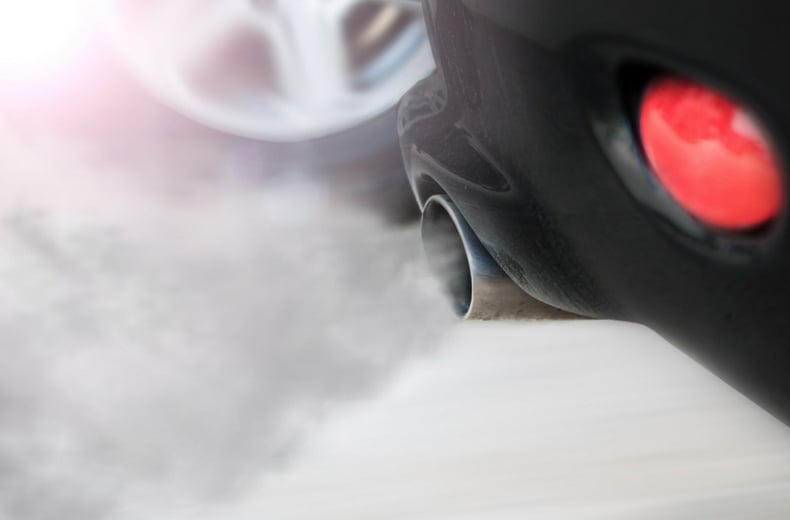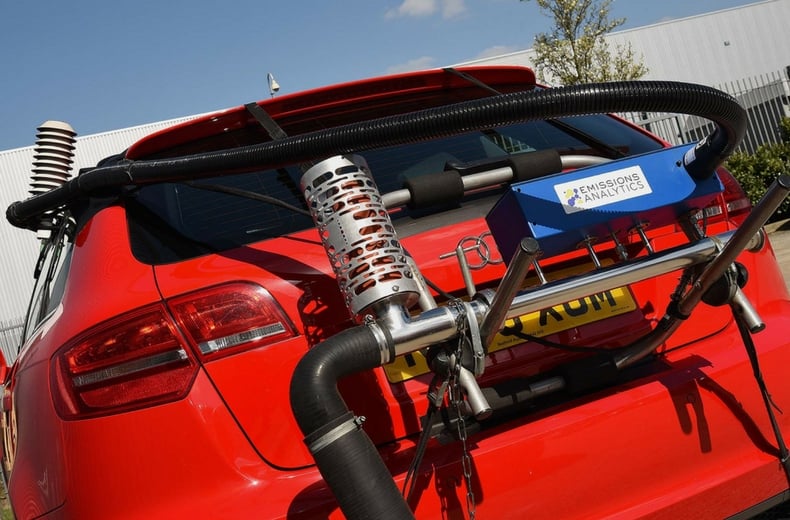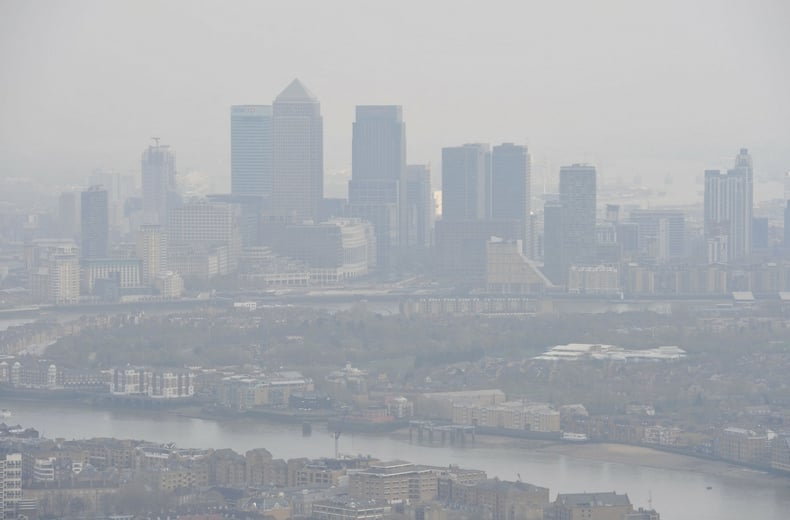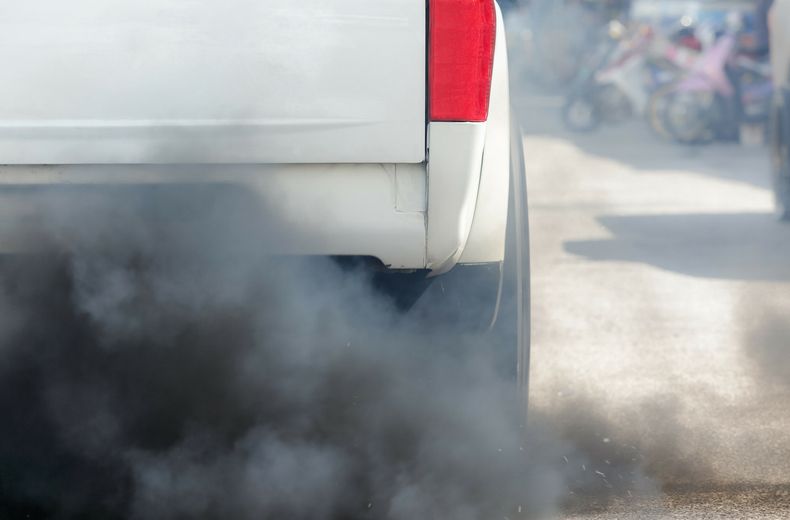Owning a Euro 6 diesel car has many benefits. It can also save you money if you drive into areas with strict rules on air pollution, like the London Ultra Low Emission Zone or the Bristol Clean Air Zone.
Law changes for UK drivers in French cities has also made Euro 6 cars more desirable for those who travel outside of the UK for business or pleasure.
So, whether you’re considering buying a new car or already own one registered after September 2015, you’ll need to be aware of what a Euro 6 standard is and how it can affect you.
Guide contents
- What does Euro 6 diesel mean?
- Is my car a Euro 6 diesel?
- Why do I need to know if my car is a Euro 6 diesel?
- What are real world driving emissions tests and why is this important?
- What are manufacturers doing to meet the standard?
- Which pollutants come from my car?
- What are the Euro 6 emissions criteria?
- Euro standards history
- What next for Euro standards?
- Euro 6: is it helping cut air pollution?

RAC Breakdown Cover
Limited Time Offer
*£7 a month for new, single vehicle Basic cover. ^For 1 nominated vehicle when added to Extra or Complete cover. New customers only. Ends 29/04/24. 7am.

What does Euro 6 diesel mean?
Ever since 1992, new cars have had to meet a certain Euro emissions standard when they are made, as part of the global challenge to improve air quality.
Euro 6 is the sixth and latest directive set by the European Union to help reduce the level of harmful pollutants produced by new vehicles.
The Euro 6 standard sets out the acceptable limits for these exhaust emissions, and since September 2015, all new cars sold have had to comply with the Euro 6 standard.
The Euro 6 requirements for petrol and diesel cars differ, as they each produce different levels of the offending pollutants.
Euro 6 diesels are being hit harder by the new measures because of their impact on air quality.
While diesel vehicles were once seen as a solution to helping the UK reduce C02 emissions – concerns over the health-risks associated with diesel exhaust pollutants such as nitrogen dioxide and particulates, have put them under even more scrutiny by Euro standards.
In 2009, Euro 5 standards stated that diesel particulate filters were mandatory on all new vehicles.
In 2012, the World Health Organisation’s International Agency for Research on Cancer classified diesel engine exhausts as carcinogenic to humans.
The following Euro 6 measures put even stricter limits on diesel emissions – aiming for a 50% reduction in Nitrogen oxides produced by new vehicles.
Is my car a Euro 6 diesel?

If your car was registered on or after 1 September 2015 or the model was approved on or after 1 September 2014 it should meet the Euro 6 standard.
However, this is not guaranteed and to be sure you should check with your vehicle's manufacturer or the V5C logbook to see the car's engine Euro rating.
The Jaguar website explains that: "Individual vehicles already on sale that were built by, and dispatched from, the manufacturer before 1st June 2015 can continue to be sold until 1st September 2016".
This in effect means that a car sold before 1st September 2016 may still have a Euro 5 engine, hence why it is important to double check with the manufacturer to be certain.
Why do I need to know if my car is a Euro 6 diesel?
If your diesel vehicle doesn’t meet the Euro 6 standards, you need to be aware that you may face charges or restrictions as the government continues to implement its air quality plan.
Although there are currently no government plans in place to penalise drivers for owning a diesel vehicle that doesn’t mean they won’t come into place in the future.
London has already introduced a low emission zone, meaning any petrol or diesel vehicle that doesn’t meet Euro 6 standards are charged a fee on top of the Congestion Charge.
These zones are being implemented in other cities, which means it's likely all diesel vehicles that do not meet the Euro 6 standard will be liable to pay fees in the future.
Keep an eye out for announcements from your local authority about your area’s clean air zones.
What are real world driving emissions tests and why is this important?

New vehicles will also be required to pass real-world driving emissions tests – known as RDEs – to ensure they comply with Euro 6 engine standards.
RDEs are part of more stringent testing procedures – set to become industry standard in 2019 – designed to give a more accurate emissions reading and assessment of fuel economy.
They’re a step up from the existing New European Driving Cycle testing procedures and are carried out on roads instead of in laboratory conditions to help reflect the car’s performance in the real world.
The tests will use a portable emissions measurement system to record the results.
Buyers should be aware that all new diesels registered from April 1 that do not meet the standard are subject to a tax hike.
- Car tax bands: a simple guide to car tax
- The real facts about ‘dirty’ diesels
- Diesel particulate filters – everything you need to know
What are car manufacturers doing to meet the standard?
In an effort to meet the complimentary Euro 6 and RDE2 targets, some carmakers have introduced Selective Catalytic Reduction (SCR).
The process involves a liquid-reductant agent being injected through a catalyst into the exhaust of a diesel vehicle.
It causes a chemical reaction that converts the nitrogen oxide into water and nitrogen.
These harmless substances are then expelled through the exhaust pipe.
Diesel cars may also be fitted with a NOx absorber which stores NOx and then reduces it to nitrogen over a catalyst.
Other innovations such as variable valve timing, direct fuel injection as well more sophisticated engine management systems are all helping manufacturers to reach the Euro 6 standard.
Which pollutants come from my car?

Several harmful chemicals are released into the atmosphere by our vehicles as damaging by-products of petrol and diesel engines.
- Nitrogen oxide (NOx) Proven to have serious health implications and cause damage to the environment
- Carbon monoxide (CO) Potential to harm all living things in sufficient dosages
- Hydrocarbons (THC and NMHC) Not harmful alone, but they react with NOx and sunlight to form smog
- Particulate matter Linked to health, specifically respiratory problems
By reducing emissions containing these harmful pollutants, vehicles enjoy an improved fuel economy, while C02 levels – which contribute towards global warming – are also reduced.
What are the Euro 6 emissions criteria?
The Euro 6 requirements for petrol and diesel cars differ, as they each produce different levels of the offending pollutants.
For example, the Euro 6 standard stipulates new diesel cars can produce no more than 0.08g/km of nitrogen oxide.
This is a substantial drop from the Euro 5 standard which stood at 0.18g/km.
Petrol cars were already required to produce no more than 0.06g/km as set out by the guidelines from Euro 5.
The full Euro 6 requirements are listed below.
They include limits for carbon monoxide (CO), total hydrocarbon (THC), methane hydrocarbons (NMHC), nitrogen oxide (NOx), particulate matter (PM) and particle number (PN).
Diesel vehicles
CO: 0.50g/km
HC + NOx: 0.17g/km
NOx: 0.08g/km
PM: 0.005g/km
PN [#/km]: 6.0x10 ^11/km
Petrol vehicles
CO: 1.0g/km
THC: 0.10g/km
NMHC: 0.068g/km
NOx: 0.06g/km
PM: 0.005g/km (direct injection only)
PN [#/km]: 6.0x10 ^11/km (direct injection only)
Euro standards history
The first Euro emissions standard was introduced in July 1992.
This required new petrol cars be fitted with catalytic converters to reduce CO emissions.
It also marked the switch towards unleaded petrol.
Since then we’ve passed through a series of standards in 1996, 2000, 2005 and 2009 leading to current Euro 6, which was introduced in September 2014.
From September 2015 the vast majority of new vehicle sales and registrations must come under the regulations.
What next for Euro standards?
Standards for emissions are only going to get stricter with new rules and targets already planned for 2020.
Car tax for high-emitting cars will also increase as the criteria become tougher.
Investing in a low emissions vehicle sooner rather than later could end up saving you a lot of money in the long run.
Euro 6: is it helping cut air pollution?
The Euro 6 standard is having a positive effect on emission levels.
The SMMT (Society of Motor Manufacturers and Traders), says: “It would take 50 new cars today to produce the same amount of pollutant emissions as one vehicle built in the 1970s.”
The following figures quoted by the SMMT highlight the extent to which Euro standards are reducing harmful by-products.
- Carbon monoxide (CO): petrol down 63%, diesel down 82% since 1993
- Hydrocarbons (HC): petrol down 50% since 2001
- Nitrogen oxide (NOx): down 84% since 2001
- Particulate matter (PM): diesel down 96% since 1993
Euro 6 Diesel FAQ
- What year vehicle is Euro 6?
Euro 6 is a vehicle emissions regulation that was first introduced in Europe in September 2014. It is applicable to all new vehicles registered in the European Union, including cars, vans, buses, and trucks. It applies to all vehicle types, including petrol and diesel-powered, as well as alternative fuel vehicles. All new vehicles must comply with Euro 6 standards in order to be registered and sold in the EU.
- Is my car Euro 6 exempt?
Euro 6 emissions standards were introduced in September 2015 and all cars registered after this date must meet the new emissions standards. In order to determine definitively if your car is exempt from Euro 6 emissions standards, you should look up the Vehicle Identification Number (VIN) on the government’s Vehicle Certification Agency (VCA) database. This will tell you the year in which the car was registered, and you can then confirm if it is exempt from Euro 6 regulations.
- What Reg is Euro 6?
Car registrations with ‘XX15 XXX’ and ‘XX65 XXX’ and beyond will be Euro 6 compliant. Also, you can verify if a car is Euro 6 compliant by looking for the Euro 6 logo on the vehicle’s registration plate.
- What cars have a Euro 6 engine?
All car manufacturers who have released new vehicles for sale after September 2014 will be Euro 6 compliant. This includes all the major brands including Ford, BMW, Mercedes, Peugeot, and many more.
- How do I check if my car is Euro 6?
There are a few ways to check if your car is Euro 6 compliant.
The first is to look at your car’s registration document, or V5C. This contains information about the vehicle, including its emissions type. If your car is Euro 6 compliant, it will say ‘EURO 6’ or ‘6’.
You can also look at the vehicle’s logbook, which is a more detailed document that contains information about the car’s technical specifications.
Finally, you can search the Vehicle Identification Number (VIN) on the government’s Vehicle Certification Agency (VCA) database.
- What is difference between Euro 5 and Euro 6?
Euro 5 and Euro 6 are two different categories of European emission standards for vehicles. Euro 5 was introduced in September 2009, while Euro 6 was introduced in September 2014.
The main difference between Euro 5 and Euro 6 is the level of pollutants that vehicles must meet in order to be compliant. Euro 5 sets limits on pollutants such as nitrogen oxides (NOx) and particulate emissions, while Euro 6 sets even lower limits on these pollutants.
Euro 6 sets stricter limits on certain other pollutants, such as carbon monoxide (CO) and carbon dioxide (CO2). It also requires vehicles to have a particulate filter, and measures the emissions of a vehicle at different speeds and loads.
Vehicles that are compliant with Euro 6 are much cleaner and more efficient than vehicles that are compliant with Euro 5. This is due to the more stringent pollutant limits and additional tests that Euro 6 vehicles must pass. - Does Euro 6 comply with ULEZ?
Yes, Euro 6 emission standards are fully compliant with the Ultra Low Emission Zone (ULEZ) standards. However, there are some very limited exceptions from this. Check the ULEZ website before travel to make sure your are compliant.
- Is my car compliant with Euro 6?
You may need to check the vehicle’s registration documents or contact the car’s manufacturer to confirm if the car meets the Euro 6 standards. Alternatively, you can search the Vehicle Identification Number (VIN) on the government’s Vehicle Certification Agency (VCA) database.










